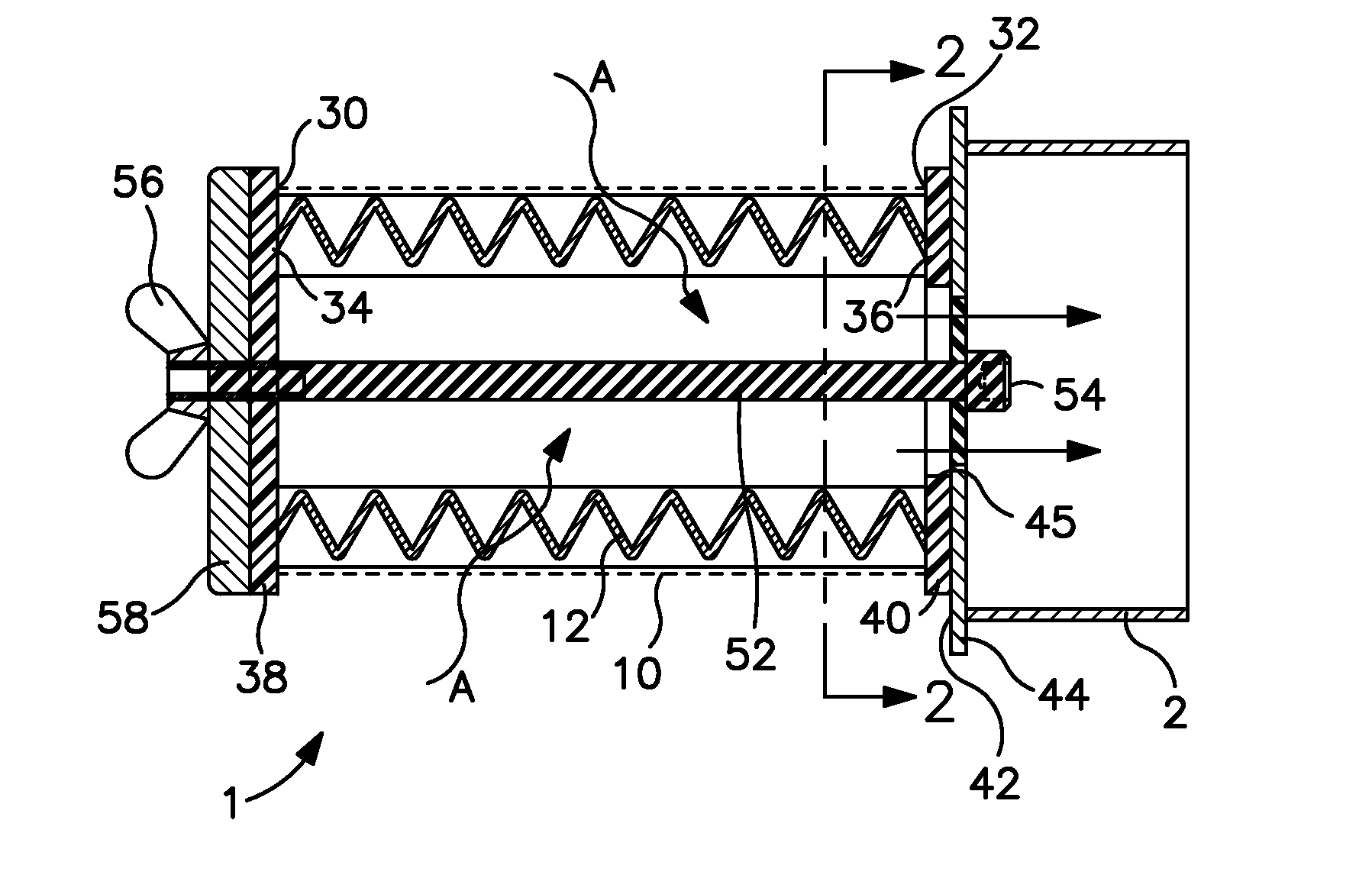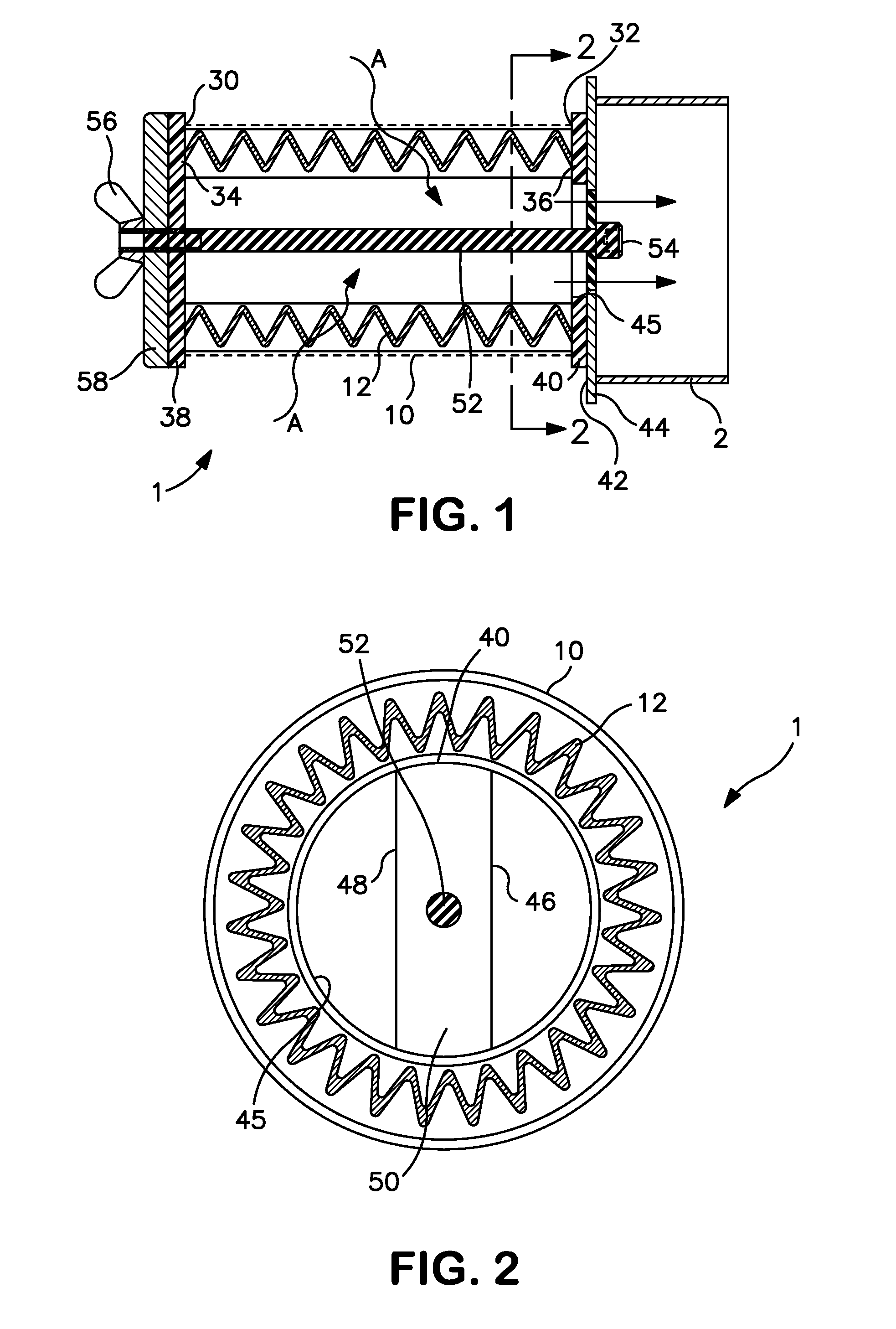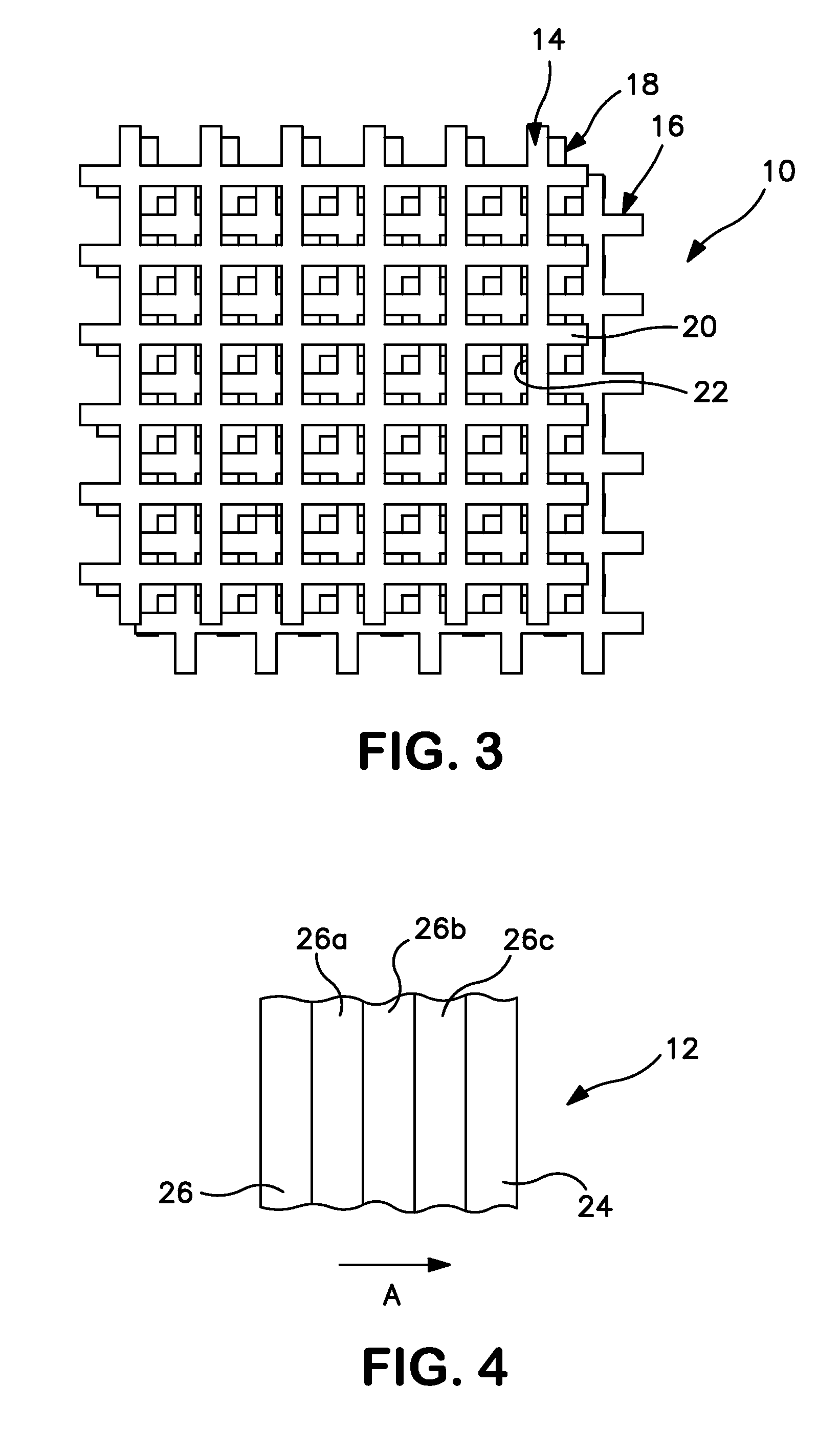Filter system for electrochemical air separation device
a filter system and electrochemical technology, applied in the field of filter systems, can solve the problems of difficult to form deposits of active components without closing off the pores, heavy laden with chemical and physical contaminants, and degrading of electrochemical devices, etc., and achieves the effects of low cost, reduced pore size, and high porosity
- Summary
- Abstract
- Description
- Claims
- Application Information
AI Technical Summary
Benefits of technology
Problems solved by technology
Method used
Image
Examples
Embodiment Construction
[0022]With reference to FIGS. 1 and 2, a filter system 1 in accordance with the present invention is illustrated. Filter system 1 has a first filter section 10 that is designed to remove sulfur compounds from the air, principally sulfur oxides and hydrogen sulfides when present in minute quantities. Sulfur oxides will react with the zinc oxide to produce zinc sulfates. The air flow indicated by arrowheads “A” draw particles of the zinc sulfides into the air inlet to the electrochemical device. Consequently, downstream of the first filter section 10 a second filter section 12 is provided to trap particulate matter. Although not illustrated, the electrochemical device that is used in connection with filter system 1 can be situated within a cabinet having its own air inlet and particulate filter to filter particulate contaminants.
[0023]Although the filter system 1 and its other embodiments is described with respect to first filter section 10 containing surface deposits of zinc oxide to...
PUM
| Property | Measurement | Unit |
|---|---|---|
| diameter | aaaaa | aaaaa |
| diameter | aaaaa | aaaaa |
| diameter | aaaaa | aaaaa |
Abstract
Description
Claims
Application Information
 Login to View More
Login to View More - R&D
- Intellectual Property
- Life Sciences
- Materials
- Tech Scout
- Unparalleled Data Quality
- Higher Quality Content
- 60% Fewer Hallucinations
Browse by: Latest US Patents, China's latest patents, Technical Efficacy Thesaurus, Application Domain, Technology Topic, Popular Technical Reports.
© 2025 PatSnap. All rights reserved.Legal|Privacy policy|Modern Slavery Act Transparency Statement|Sitemap|About US| Contact US: help@patsnap.com



